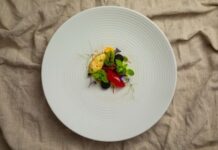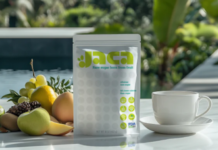Whether you’re a seasoned foodie or someone looking to expand your palate, these famous exotic dishes offer a memorable journey through the flavors of the world.

Food is a universal language that bridges cultures and offers a window into traditions, lifestyles, and histories. While some dishes are familiar and comforting, others push the boundaries of taste and texture, offering adventurous eaters a glimpse into the extraordinary. Here’s a tour of some of the most famous exotic dishes from around the world that promise to challenge, surprise, and sometimes even shock the palate.
Balut – Philippines
Balut is a fertilized duck egg that is boiled and eaten directly from the shell. What makes it exotic? Inside the egg is a partially developed duck embryo, often consumed with a pinch of salt or a splash of vinegar. The combination of soft yolk, tender embryo, and broth-like liquid makes balut a unique culinary experience. While it may be intimidating for first-timers, balut is a beloved street food in the Philippines.
Hákarl – Iceland
Hákarl, or fermented shark, is a traditional Icelandic dish made from Greenland shark that has been cured for several months to eliminate toxins. The result is a pungent, ammonia-rich meat with a strong aroma and a taste that has been described as challenging even for the most daring eaters. Traditionally served in small cubes, Hákarl is often paired with a shot of Brennivín, Iceland’s signature schnapps.
Casu Marzu – Italy
Casu Marzu, meaning ‘rotten cheese’ in Sardinian, is not for the faint of heart. This sheep’s milk cheese is left to ferment until it hosts live insect larvae that break down the fats and give the cheese a soft texture. Eaters brave enough to try it are often treated to a creamy, tangy cheese that is considered a delicacy in Sardinia. However, the larvae are typically still alive when consumed, adding to its reputation as one of the world’s most dangerous cheeses.
Fugu – Japan
Fugu, or pufferfish, is one of Japan’s most renowned delicacies. What makes it exotic — and potentially deadly — is the fact that it contains tetrodotoxin, a potent toxin that can be fatal if not prepared properly. Only licensed chefs with years of training are allowed to serve fugu, which is often enjoyed raw as sashimi or cooked in a hot pot. The thrill of eating fugu lies in its delicate taste, enhanced by the slight tingling sensation it leaves on the tongue.
Sannakji – South Korea
Sannakji is a dish that brings seafood to life — literally. It consists of live octopus tentacles that are cut into small pieces and served immediately, often seasoned with sesame oil and sesame seeds. Because the tentacles are still moving when served, diners need to chew thoroughly to avoid the risk of choking. For seafood lovers looking for a sensory adventure, sannakji delivers an unforgettable experience.
Surströmming – Sweden
Surströmming is fermented Baltic herring that has been preserved with just enough salt to prevent it from rotting. The result is an extremely pungent dish that is typically enjoyed outdoors due to its strong smell. Surströmming is often eaten with flatbread, potatoes, and sour cream, balancing out its intense flavor. It’s a dish that has gained international fame for its distinctive aroma and taste.
Century Egg – China
Century eggs, also known as preserved eggs, are duck, chicken, or quail eggs that have been preserved in a mixture of clay, ash, and quicklime for several weeks or months. The result is a dark, jelly-like egg with a strong flavor and an earthy aroma. Often served as an appetizer, century eggs are a prized delicacy in Chinese cuisine, enjoyed with pickled ginger or soy sauce.
Tuna Eyeballs – Japan
A lesser-known yet fascinating Japanese delicacy, tuna eyeballs are exactly what they sound like — the large, gelatinous eyes of tuna. Typically boiled and seasoned with soy sauce and garlic, they have a texture similar to squid or octopus, with a rich, fatty taste. Though they may look intimidating, tuna eyeballs are considered nutritious and full of flavor.
Kopi Luwak – Indonesia
Kopi Luwak, also known as civet coffee, is one of the most expensive and exotic coffees in the world. What makes it unique is its production process — the coffee cherries are eaten by civet cats, partially digested, and then excreted. The beans are collected, cleaned, and roasted, resulting in a smooth, less acidic coffee with earthy and chocolatey notes. Despite controversy over animal welfare concerns, Kopi Luwak remains a sought-after delicacy for coffee connoisseurs.
Jellied Moose Nose – Canada
A traditional dish among indigenous communities in Canada’s northern regions, jellied moose nose is exactly as described — the snout of a moose boiled, spiced, and then set into a gelatinous mold. The resulting dish offers a mix of textures, with the cartilage becoming tender and the broth forming a flavorful jelly. It’s considered a delicacy in the Yukon and Northwest Territories.
Airag – Mongolia
Airag, also known as kumis, is a fermented mare’s milk that is a staple in Mongolian culture. The milk is fermented in a leather bag for several days, resulting in a slightly sour, tangy drink with a mild alcoholic content. Airag is often consumed during festivals and ceremonies and is valued for its supposed health benefits.
Tarantula – Cambodia
In Cambodia, deep-fried tarantulas are a popular street food snack that dates back to the Khmer Rouge era when food was scarce. These spiders are seasoned with salt, sugar, and garlic before being fried until crispy. The legs are crunchy, while the abdomen contains a soft, somewhat creamy filling. Despite its fearsome appearance, tarantula is considered a delicacy in Cambodian markets.
Beondegi – South Korea
Beondegi, or steamed silkworm pupae, is a popular street food in South Korea. The pupae are boiled or steamed, seasoned lightly with salt, and served in paper cups as a snack. Beondegi has a slightly nutty flavor and a chewy texture, making it a nostalgic treat for many Koreans who grew up enjoying it.
Snake Wine – Vietnam
Snake wine is a potent alcoholic beverage made by infusing rice wine or grain alcohol with a whole venomous snake. The snake’s venom is neutralized by the alcohol, and the resulting drink is believed to have medicinal properties. Snake wine is often consumed for its purported ability to boost vitality and improve health, though it is certainly not for the faint-hearted.
Blood Soup (Tiết Canh) – Vietnam
Tiết canh is a traditional Vietnamese dish made from fresh animal blood, often from a duck or pig, mixed with herbs, peanuts, and fish sauce. The blood is left to coagulate, resulting in a chilled, jelly-like dish with a savory, slightly metallic taste. It is considered a delicacy in some regions, although its consumption has become less common in recent years due to health concerns.
Witchetty Grubs – Australia
Witchetty grubs, large, white larvae of moths found in the roots of certain plants, are a traditional Aboriginal food in Australia. They can be eaten raw, with a creamy texture reminiscent of almonds, or roasted, which gives them a crispy exterior and a nutty flavor. Witchetty grubs are high in protein and have been a staple in indigenous diets for centuries.
Exploring exotic dishes from around the world is more than just an adventure for the palate — it’s a journey into the heart of different cultures and traditions. While some of these dishes may seem unusual, they are treasured delicacies in their native countries, offering a taste of authenticity that few other experiences can provide. Whether you’re an adventurous foodie or just curious about global cuisines, these exotic dishes promise an unforgettable culinary journey.


















